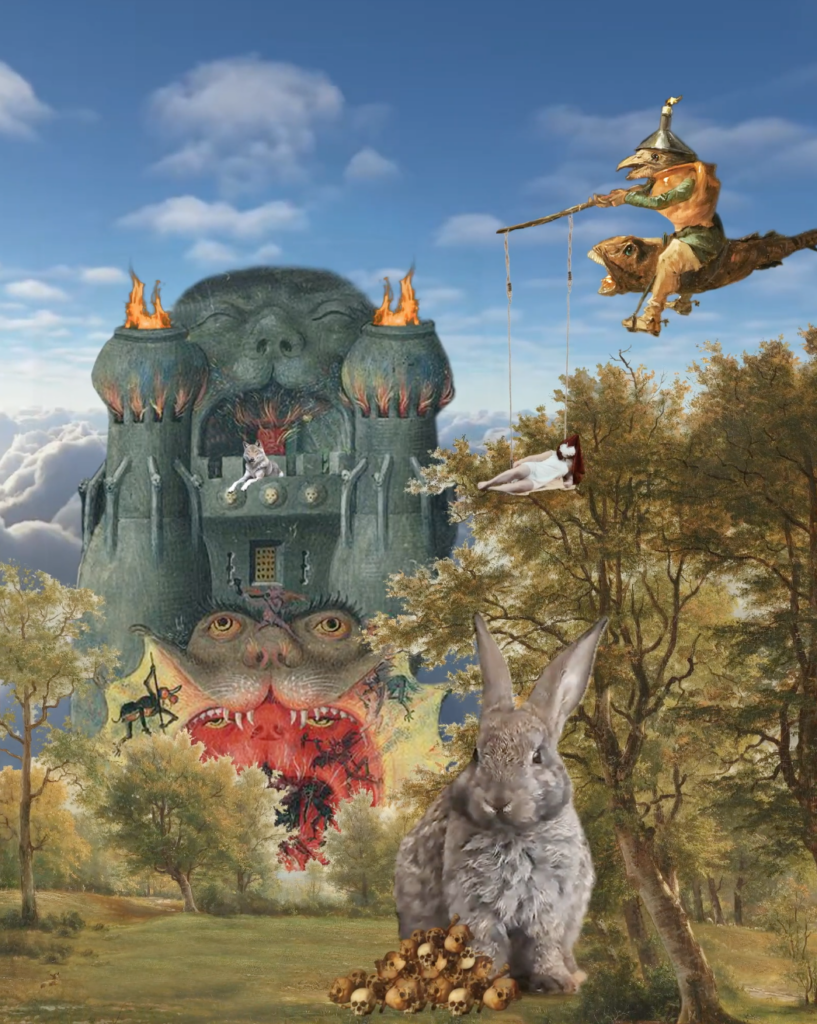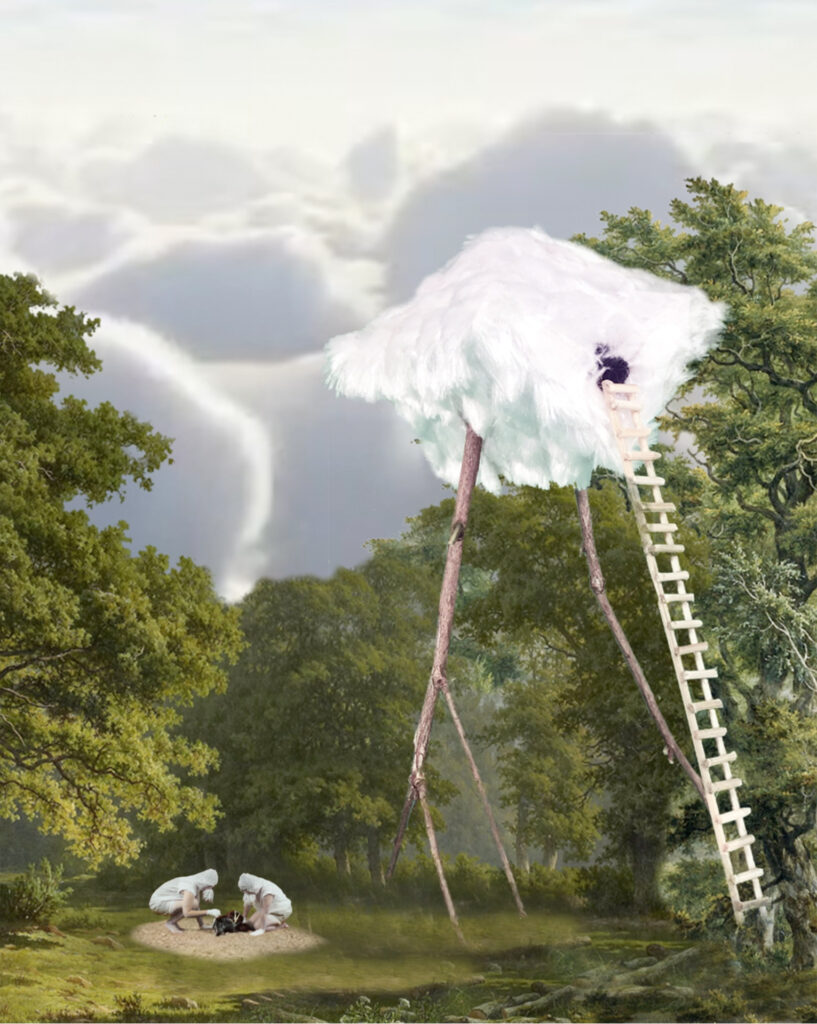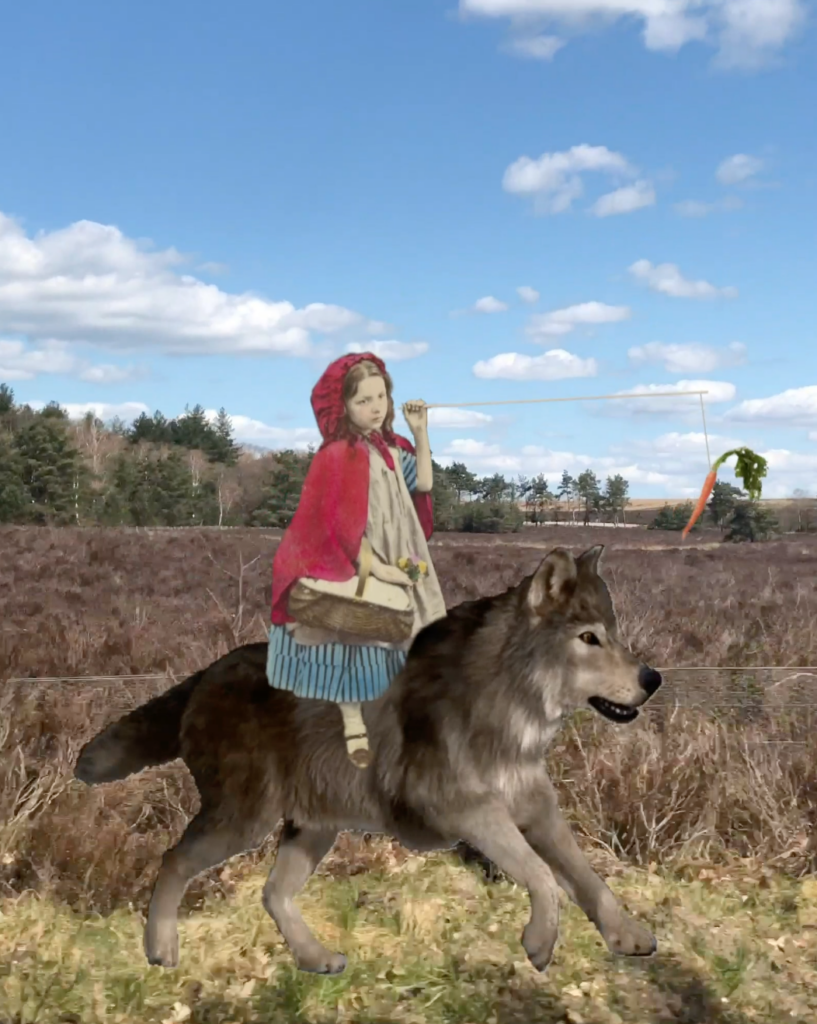The Return of the Wolf
Rediscovering Nature’s Narrative
2021
This project was exhibited during Rotterdam Art Week 2021, at the In-Between; Dutch Design Week 2021; the film was screened at Movie Theater Focus in Arnhem, Gelders Doek in 2021.
Made possible by: M.I.A.R.D.
With special thanks to: Studio Ossidiana, Ephraim Joris, Natasha Marie Llorens, Golnar Abbasi, Federico Martelli.
Team: Evert Cloo, Julia Jansen, Iris Seriese.

‘The Return of the Wolf’, is a transformative journey, where Berkveldt becomes wolf (but to do so also ought to become sheep) in order to interrogate a cultivated and disconnected landscape of the Netherlands. The story is told as a contemporary fairy tale through film. Various costumes and props allow this transformative journey to take place. For the body to become other. As explored by scholars like Donna Haraway and Karen Barad, the project questions the centrality of the human subject and acknowledges the agency and importance of non-human entities and the role they play in shaping societies, cultures, and their architectures. With this work, Berkveldt re-evaluates spatial design methodologies, emphasizing a collaboration with the natural material world. They put forward a more holistic and ecological approach by going far in exploring the entanglement of matter and meaning and indeed engage with the ethical responsibilities that arise from this entanglement.
As written by dr. arch. Ephraim Joris, co-founder of the architectural firm ‘PARENT’ and lecturer at the Willem de Kooning Academy in Rotterdam, in AR Journal (editor: Igor Marjanović).
Nature’s resilience against human-imposed boundaries
In ‘Return of the Wolf ’, we reflect on the wolf ’s comeback after 150 years of absence, symbolizing nature’s resilience against human-imposed boundaries. This return asks for a transformation of the Dutch landscape, urging us to remove artificial barriers and reconsider our coexistence with nature.
We responded on this development with a cross-media experience, ‘The Return of the Wolf’, blending the wolf’s story with historical and contemporary media to envision harmonious coexistence between humans and nature. This project invites viewers on a journey to a world where artificial barriers fall away, and wolves roam freely.
The artistic research
GW998F is a female wolf from a pack near Babben (Brandenburg, Germany), and traveled over 600 km to settle here in the Netherlands. As part of our artistic research, we traveled along the path she took after entering the Netherlands. Along that journey, we interviewed her new neighbors, visited sites where she attacked cattle, talked to experts and documented her new habitat.
The installation
We translated our research into a contemporary fairy tale. Through the various costumes and props we enabled ourselves to embody the subject and create a transformative journey. In this immersive space, the project questions the human as a central subject and discusses the importance of non-human entities.
In medieval times, traveling theatrical plays were used to highlight societal challenges. The wolf, historically entwined with diabolical symbolism during the Middle Ages, was often associated with the devil and calamities like the plague. Therefore, we adopted a style for this work reminiscent of that era. Our traveling installation uses a traditional method to highlight a contemporary issue.



Our stage, constructed and styled to resemble a tent from medieval times, adopts a Brechtian method of engagement, where the narrative is presented on a central stage, flanked by four additional screens. These screens project a “fantasy audience” in costume, who interact with the main story, blurring the lines between actors and real-life viewers. Viewers physically situate themselves amidst the fantasy audience’s screens, becoming an integral component of the installation and the narrative. This immersive setup narrates from a future perspective, with the wolf delineating its past and present, offering a new vision for the future.

The Devil’s wolf. Picture by: Chiaramente Studio

The werewolf. Picture by: Chiaramente Studio

The plague wolf. Picture by: Chiaramente Studio